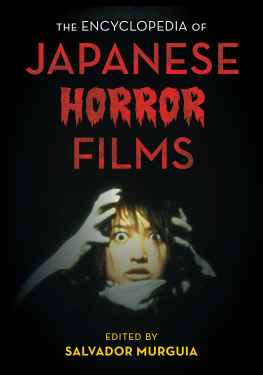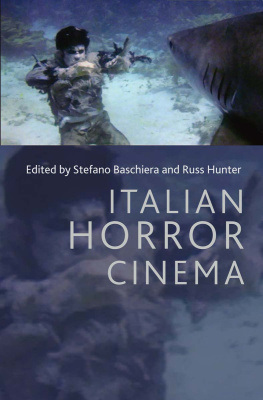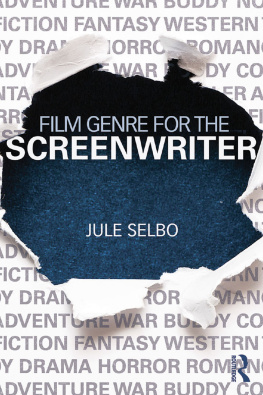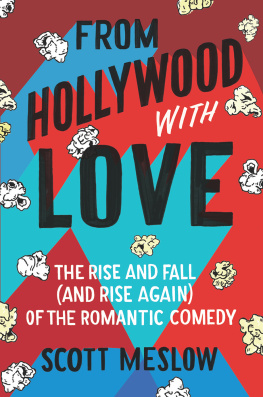
GENRE, AUTHORSHIP AND CONTEMPORARY WOMEN FILMMAKERS
GENRE, AUTHORSHIP AND CONTEMPORARY WOMEN FILMMAKERS
Katarzyna Paszkiewicz

Edinburgh University Press is one of the leading university presses in the UK.
We publish academic books and journals in our selected subject areas across the humanities and social sciences, combining cutting-edge scholarship with high editorial and production values to produce academic works of lasting importance. For more information visit our website: edinburghuniversitypress.com
Katarzyna Paszkiewicz, 2018
Edinburgh University Press Ltd
The Tun Holyrood Road
12 (2f) Jacksons Entry
Edinburgh EH8 8PJ
A CIP record for this book is available from the British Library
ISBN 978 1 4744 2528 5
The right of Katarzyna Paszkiewicz to be identified as author of this work has been asserted in accordance with the Copyright, Designs and Patents Act 1988 and the Copyright and Related Rights Regulations 2003 (SI No. 2498).
CONTENTS
FIGURES
ACKNOWLEDGEMENTS
I would like to thank all those who have supported me during the long research and writing process. I wish to thank my friends and colleagues at the University of Barcelona, whose approaches have helped me shape my own and who have supported me in many ways, especially my superb research mentors, Helena Gonzlez and Marta Segarra. Without their encouragement and guidance, this book might never have existed. For various forms of support over the years it took to complete this book, I thank Elena Losada, who continues to inspire me in all sorts of ways. I am also grateful to Cristina Alsina, Rodrigo Andrs, Francesco Ardolino, Isabel Cla and Joana Sabadell, who helped at different stages and in different ways. Thank you for your kindness and friendship.
Along the way I have been honoured by the generous suggestions of people I respect and admire, which have certainly propelled the project forwards. I benefited especially from my research visits to the University of Melbourne and the University of Pennsylvania. I thank Barbara Creed, Karen Beckman and Timothy Corrigan for this opportunity and for a warm welcome. Many colleagues have shared feedback on my work at the Society for Cinema and Media Studies and Doing Womens Film History and Television conferences, as well as other meetings over the years. I sincerely thank my friend Dawn Hall, who helped with ideas and encouragement. I am also grateful to Christine Gledhill and Christina Lane for inspiration and support, and to Patricia White, who generously shared her manuscript, Womens Cinema, World Cinema, with me, and from whom I learnt so much.
This research builds on my earlier study on women filmmakers and genre, developed as my PhD thesis (Rehacer los gneros: mujeres cineastas dentro y fuera de Hollywood, Icaria, 2017), and has evolved in dialogue with the contributors to my co-edited book collection Women Do Genre in Film and Television (Harrod and Paszkiewicz eds, Routledge, 2017). My heartfelt thanks to Mary Harrod, my collaborator in the latter and long-time interlocutor, who has read and graciously commented on each of the chapters of the present volume. This book is much better than it would have been without her input and suggestions. I am also grateful to Deborah Jermyn for her generous feedback on Chapter 6 and my research on Nancy Meyers in general. I am also indebted to Linda Badley and the anonymous peer reviewers for their excellent and enormously helpful feedback on my proposal, and I wish to sincerely thank them. Many thanks as well to Eloise McInerney for her help with and invaluable comments on Chapter 1. I also want to thank my editors Gillian Leslie and Richard Strachan, as well as Eddie Clark and the whole team at EUP, and the copy-editor Elizabeth Welsh, for their interest and suggestions, for their professionalism, efficiency and understanding. My special thanks to my dear friend, Andrea Ruthven, who proofread my manuscript and provided invaluable insights to this project. Thank you for asking the right questions and supporting me in many ways during the long process of writing. You were a frequent sounding board who kept my spirits high.
My friends have provided me with great support. Among them, I especially thank Marta Font, Julia Lewandowska, Laura Lpez, Aleksandra Malicka, Eva Pars-Huesca, Maribel Rams, Lola Resano and Mara Teresa Vera Rojas.
Finally, I would like to express my wholehearted gratitude to my parents, Jola and Zbyszek, and to Gaspar for their unfailing love throughout the years. Gaspar, who happens to be an astute critic and splendid editor, made suggestions on earlier drafts of this book for this, I am truly thankful.
INTRODUCTION: IMPOSSIBLE LIAISONS? GENRE AND FEMINIST FILM CRITICISM
I dont think Ive read the words women and film and feminism in the same sentence as much in the last few months since Thelma and Louise rocked the culture nearly two decades ago.
(Dargis 2010a)
Kathryn Bigelows success at the 2010 Academy Awards, when she became the first woman to receive an Oscar for Best Director for The Hurt Locker (2008), has renewed scholarly and critical interest in womens filmmaking and the position of female directors within Hollywood, as illustrated by The New York Times film critic Manohla Dargiss comment above. The controversies surrounding Bigelows historical win, as Dargis suggests, can be compared to those that emerged from the critical reception of Thelma and Louise (Ridley Scott, 1991), a generic amalgam of the Western, the buddy film and the road movie three genres traditionally codified as male and which significantly features two female leads. At the time of its release, Scotts film sparked considerable debate regarding its political value for feminism, often being read as a radical revision of Hollywoods conventional representation of womans place in the domestic sphere (Tasker 1993: 1349).
In spite of Dargiss enthusiastic response, The Hurt Locker, a war film about an Explosive Ordnance Disposal (EOD) team deployed in Baghdad, centred on the representation of US soldiers (of which all are male in the film), has not generated similar consensus on its significance in relation to feminist politics. While many commentators in the mainstream press celebrated the filmmakers triumph as a female director working in a predominantly male industry in the vein of Barbra Streisand, who famously announced that the time has come, just before declaring Bigelow the winner of the Best Director category during the awards ceremony the event also provoked a fair number of hostile responses, which emanated in part, and perhaps perplexingly, from feminist circles. In a frequently quoted salon.com article on The Hurt Locker provocatively entitled Kathryn Bigelow: Feminist Pioneer or Tough Guy in Drag?, Martha Nochimson (2010) famously accuses Bigelow of masquerad[ing] as a hyper-macho bad boy to earn the respect of the cinematic industry, dubbing her not the Queen of Directors, as Quentin Tarantino referred to Bigelow when she received the Directors Guild of America Award, but the Transvestite of Directors. Clearly frustrated by the institutional sexism in Hollywood, Nochimson regrets the cultural marginalisation of the chick flick, observing that the industry is so hobbled by gender-specific tunnel vision that it has trouble admiring anything but filmmaking soaked in a reduced notion of masculinity (2010).
In hindsight, it is evident that Bigelows history-making win has not resulted in an increased number of women directors in the commercial film sphere, as Melissa Silverstein, author of the blog
Next page










